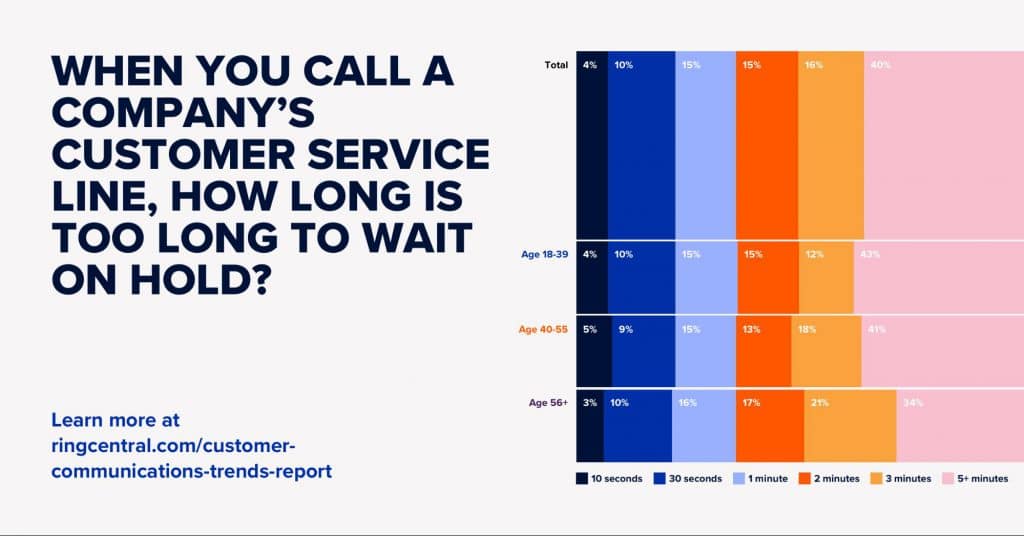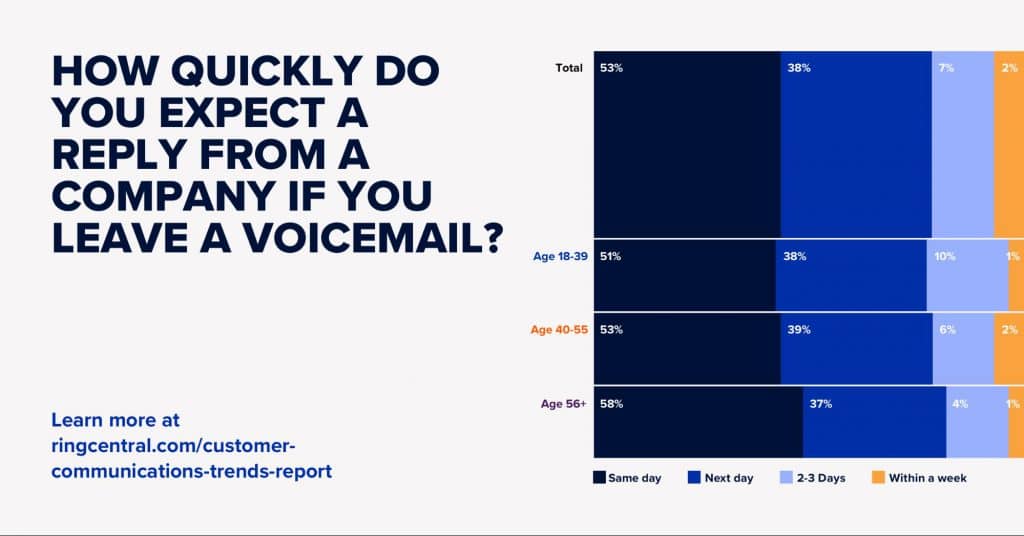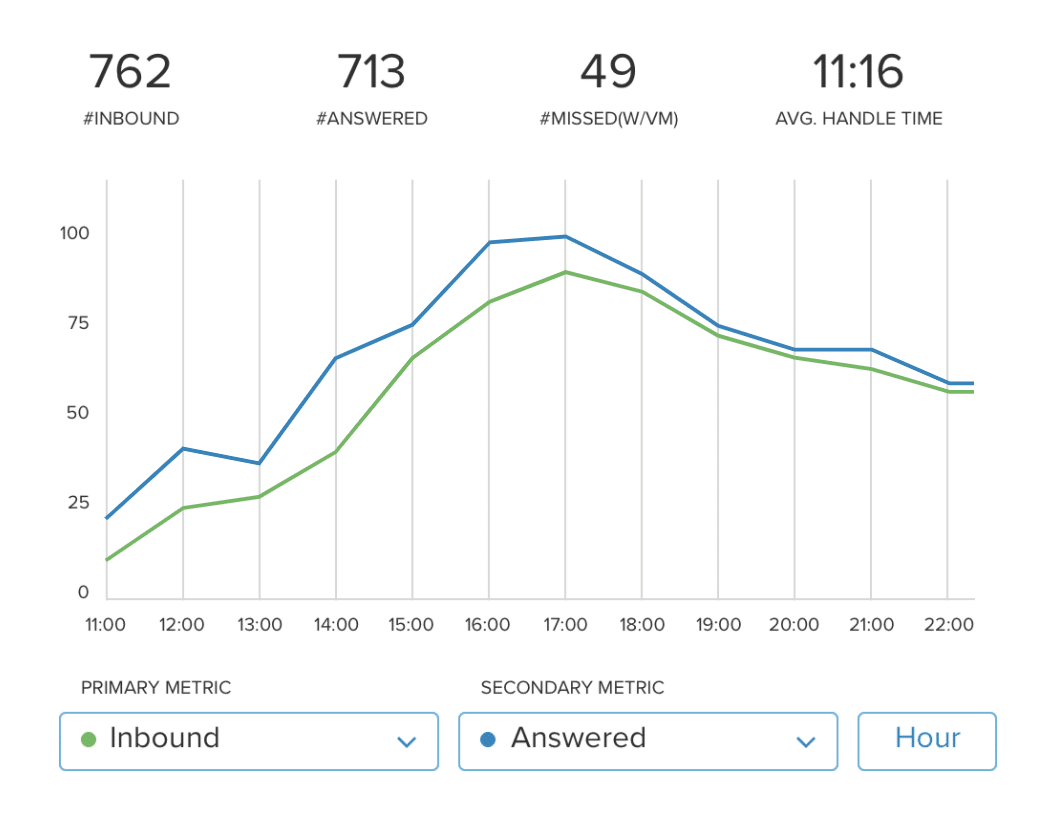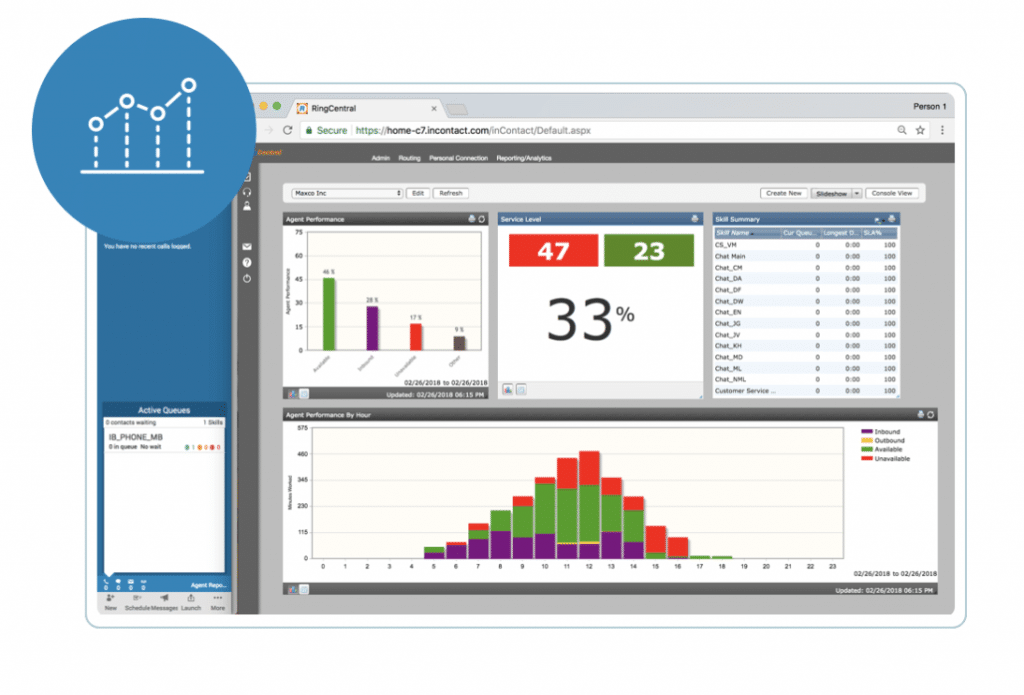Data. It’s everywhere. In fact, 2.5 quintillion bytes of data are created every single day.1 You read that right: quintillion. Not trillion, or even quadrillion. That’s a lot of zeros… and a ton of information floating through the air that can be harnessed and analyzed.
On a smaller and more manageable level: your business’s contact or call center is creating data all day that can make a big impact on your revenue, productivity, and customer satisfaction—if only you knew how to measure it.
But where do you start, and how do you know what the right metrics are for your unique business?
Today, we’ll cover:
- What are “call center metrics”?
- 4 benefits of measuring call center metrics
- How to choose the right contact center metrics to track
- 7 critical call center metrics to track
👀 How much do you know about call centers? Become an expert with the Next-Gen Cloud Contact Centers for Dummies eBook.
What are “call center metrics”?
Call center metrics are the data for different aspects of your contact center, like length of call time, call volume at a certain time of day, and more. Today, you can track just about anything your heart desires to gain insights about your business’s customer service performance.
An important note: customer service centers handle a lot more than phone calls, and those metrics are just as vital to your business. If your team also deals with emails, social media comments, and text messages in your contact center, don’t sweat it: this post has you covered with suggestions for useful omnichannel metrics to track.

4 benefits of measuring call center metrics
1. Get ahead of call center overload
Tracking call center metrics is the best way to catch problems before they snowball. One big issue contact centers can face is being overloaded with inbound calls and messages:
This means more customers sitting on hold or waiting for a reply, which could lead to real money lost for your business—and a frustrated service team. By tracking some simple metrics, you can see the overload coming and make sure your team has the support they need to get out in front of it.
2. Increase customer satisfaction and retention
Long wait times can really put a damper on customer satisfaction. Whether they call you on the phone or send you a message, customers today expect lickety-split responses—and have little patience for delays.
Speaking of customer expectations, a whopping 91% of customers expect to receive a response either the same day or the next day when they leave you a voicemail message:
Measuring call volume at certain times of day and days of the week can help you figure out when and where you need more resources to keep everyone happy. Happy customers stick around and tell their friends how great you are!
3. Optimize your call center team’s performance
As your business grows, it gets harder to keep an eye on everything that happens. Whether your contact center is in-house or you have a remote support team, the right metrics can help you see which of your team members are killing it—and who needs some more support or training.
A great call center monitoring tool will allow you to program in tons of customer service key performance indicators (KPIs). For example, with RingCentral’s Analytics Portal, you can track things like the number of calls ending up in voicemail, the speed of answer, and the number of refused calls, as well as outbound metrics. That means you can set clear goals and communicate them to your team, so everyone’s on the same page.
4. Simplify call center scheduling
Scheduling your team shouldn’t be a crap shoot. By tracking certain metrics, you can lean on data instead of your gut to plan for the right number of agents for any time of day. You can also easily see which skills are most in demand from customers during different periods of time, based on the questions your agents get, so you know who should be on the schedule during those periods:
How to choose the right contact center metrics to track
While all of this data can be really helpful, it’s easy to fall into the trap of tracking every metric possible, simply because the data is there. This can create a lot of strain on whoever’s supposed to report on those metrics… and in a small business, that might be you.
It’s important to figure out which call center statistics are the most meaningful for your specific business and which are just “vanity metrics”: measurements that seem important on the surface but don’t really tell you much about the important things.
Let’s say you’re focused on call length, or handle time, as one of the metrics you track. It seems like a common focus: a lot of businesses want to shave down service calls as much as possible to optimize their call center. In some industries, this might be useful to track if your main goal is efficiency. But in other cases, like healthcare or other more sensitive fields, it might feel incredibly impersonal to rush someone off the phone—which could lead to customer churn.
Our biggest suggestion: don’t worry about what everyone else is tracking. Chances are they might have fallen prey to vanity metrics, too. Figure out what data really speaks to your success. Read on for some of our top picks for both inbound and outbound metrics to track.
Learn about the damage that long hold times can do, and what customers expect from call or contact centers today.
7 critical call center metrics to track
1. Customer retention rate (CRR)
What it is: Your customer retention rate is the average length of time that someone stays your customer.
Why it matters: Loyal customers are the lifeblood of small businesses. They do consistent business with you and sing your praises to their friends and family. Plus, it’s a lot cheaper to keep a customer than woo a new one. That’s why customer retention metrics are an important one to track, no matter what industry you’re in.
How to track your customer retention rate:
- Find out how many customers you have at the end of a given period (week, month, or quarter).
- Subtract the number of new customers you’ve acquired over that time.
- Divide by the number of customers you had at the beginning of that period.
- Then, multiply the result by one hundred for your percentage.
Read more: How to Calculate and Improve Your Customer Retention Rate
2. First call resolution (FCR)
What it is: Your first call resolution rate (or first contact resolution rate) shows the number of customers you’re able to help in a single interaction.
For example, someone calls you because a product they bought from you just broke. Your team is able to get a replacement sent out that day. Problem: solved, in one phone call alone.
Why it matters: Put yourself in your customer’s shoes. How great is it when all it takes is one phone call? That’s why racking and improving your first call resolution rate can make a big impact on customer satisfaction and retention.
How to track your first call resolution rate:
- Use your contact center analytics portal to find out how many customer requests were resolved in a single interaction at the end of a given period (month, quarter, or year).
- Divide by the number of requests you received during that period.
- Then, multiply the result by 100 for your percentage:
(# of customer requests resolved in a single interaction in a given period / # of requests) x 100 = FCR rate
Read “First Call Resolution Standard: Impress Your Callers in Minutes”
3. Average handle time (AHT)
What it is: Average handle time is the average amount of time a phone call lasts between an agent and a customer.
Why it matters: Depending on your industry, longer handle times can speak to inefficiencies in your call center. They could mean your team needs more training because they have to keep putting folks on hold in order to track down solutions. In a time when people are busier than ever, most customers will be turned off by sitting on the phone for long periods of time. And that can directly affect your customer retention and satisfaction.
On the flip side, making AHT the main metric you track can be risky. If agents feel rushed to end phone calls or close out tickets, they could make mistakes or leave customers without a resolution. So tread carefully when setting your benchmarks.
How to track your average handle time:
- Decide on a period of time to measure: a month, a quarter, a year, etc.
- Using your contact center analytics portal, add up the total talk time, hold time, and after-call tasks from that time period.
- Divide by the number of total calls, and you have your average.
Total time for talking, holding, and after-call tasks in a given period / # of total calls = AHT
Or, if you have a world-class call center metrics tool like RingCentral, you can skip the math and see average handle time (and so much more) in custom reports:
4. Adherence to schedule
What it is: Adherence to schedule is a metric that some people see as a replacement for average handle time, since it focuses on the amount of time your agents are available for calls in a given hour instead of call duration. Every aspect of on-the-clock work is taken into account: time on the phone, time spent doing after-call tasks, even time spent waiting for more calls to come in.
Why it matters: This metric is important if you’re looking to optimize your team’s productivity. The more efficient and available your team is, the more customers can be helped and walk away happy, ready to do business with you again in the future. Tracking this can also show you where overloads might be for better scheduling.
How to track your team’s adherence to schedule: A good workforce management (WFM) tool can help. RingCentral Contact Center™ comes standard with WFM and measures how contact center agent time is spent, helping you better align resources—without micromanaging your team:
5. Customer satisfaction
What it is: This one’s pretty straightforward. Customer satisfaction is the level at which your customers are happy with the products and services you provide.
Why it matters: If you want to grow (and who doesn’t?), customer satisfaction should be a cornerstone of your metrics. For a small business, customer satisfaction is crucial. Happy customers lead to steadier revenue and more reliable referrals.
How to track your customer satisfaction: Dealer’s choice! There are lots of ways to measure how satisfied your customers are, but here are two automated ways to do it that save time and money:
- End-of-interaction surveys: After each call or messaging conversation, send a quick satisfaction survey question to the customer. This can measure satisfaction (“How satisfied were you?”) or your Net Promoter Score (NPS) (“How likely are you to recommend us?”). Some contact center platforms like RingCentral include ways to automatically send these customer surveys and build reports, so you can easily track this important metric.
- Track customer sentiment: A contact center tool that’s worth its salt today will include the ability to measure customer sentiment through text speech analytics. This allows you to spot customer trends, issues, and changes quickly by reviewing customer conversations for key topics and phrases. This cool new feature comes standard with RingCentral’s customer engagement solutions:

6. Skill performance
What it is: Skill performance is how well your contact center handles questions in a specific skill area. This could be returns, product malfunctions, billing inquiries, or other important areas that matter to your business.
Why it matters: Monitoring skill performance (and skill load) comes in handy especially if you’re using an automatic call distribution system, or ACD. With an ACD, you can route incoming calls based on the topic of the customer’s issue, so they’re transferred to the person with the most knowledge in that area. This can do wonders for your first call resolution and customer satisfaction rates.
Tracking this metric can also show you where you need more area experts, and when, so you can better train and schedule your team.
How to track skill performance:
Using your automatic call distribution portal, create rules tied to certain popular customer questions: if they need help with billing, they are sent to Agent A’s desk, and so on. This will create skills-based routing, and from there, you can track how often certain skills are requested and how well your agents handle these queries.
P.S. With RingCentral’s customer engagement solutions, your ACD analytics portals live in one place, so you can easily monitor and update your metrics parameters.
🕹️ Get a hands-on look at how RingCentral works by booking a product tour:
7. Quality of service
What it is: From the sound of this, you might think it’s about how well your agents handle contact with your customers. But quality of service is actually about the health and reliability of your phone service.
Why it matters: As a small business, you can’t afford to have downtime or dropped calls. Every customer counts, and the quality of your connections to them can mean the difference between growing your base and standing still.
How to track quality of service: Look for a customer engagement platform like RingCentral that has the tools to monitor your phone system’s global health and accurately diagnose call quality issues in near real time.
Are you tracking the right call center metrics?
It can be hard to know what metrics are the ones that make the most sense for your small business to track. These seven metrics are a good place to start, but it’s not a one-size-fits-all solution. Every business is different, so start here but check in regularly with your team about the results to make sure you’re learning valuable information from the data you’re tracking.
One important recommendation as you wade into call center metrics: find a platform that does the work for you. Look for a tool that puts your call center data and metrics in the same place and offers custom reports and beautifully visualized dashboards.That way, you can focus on bringing in new business while also keeping tabs on your contact center productivity and customer satisfaction.
Originally published Mar 30, 2020, updated Jun 21, 2024










